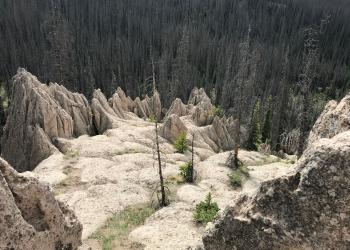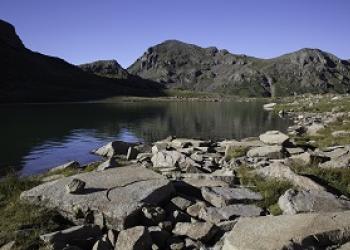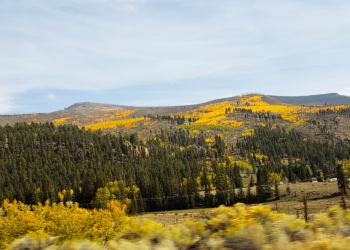Natural Resources
The conservation and management of our nation's natural resources is a big part of what the Rio Grande National Forest does on the 1.8 million acres we are entrusted with. There is much to do to ensure clean water, and forest products are available now and for future generations. The links below will guide you to the many pages of information on topics such as Forest Management, Grazing, Water, Air & Soils, Cultural Resources and Animals & Plants. The green navigation bar above will also guide you to all of the pages on our site. We welcome you to click away to learn more about YOUR Rio Grande National Forest.
Archaeology and Cultural Resources

Archaeological/historical/cultural resources are important because the data obtained through studying and researching these resources helps to tell the story of all of us as human beings.
Forest Health

Our forests have evolved throughout time in large part due to natural disturbances such as beetles, floods, landslides and wildfires. Learn about our Forest from the perspective of natural change agents and management techniques.
Forest Management

The Forest is covered hundreds of thousands of acres of forested land. These forests are managed for a variety of uses from recreation, wilderness, habitat for wildlife, and for forest products like firewood, as well as for timber to make the many products we use every day.
Geology

The mountains and valleys here have seen drastic changes over time, from intense volcanic activity to the slow deposition of sediments that created new rock. Mountains were built through uplifts and volcanos, then worn down by glaciers and erosion.
Rangeland and Grazing

Livestock grazing has been permitted on Forest Service lands since 1934 and is part of the Forest Service multiple use mission. These lands provide a workplace for ranchers and vast open spaces for recreation use. Grazing supports the local economy and the historic ranching heritage of Colorado.
Water, Air and Soil

Water is one of the most important natural resources flowing from forests. National Forests and Grasslands are the largest source of fresh water in the U.S. under a single manager, with about 20 percent originating from 193 million acres of land.
Animals and Plants

Abundant fish, wildlife, and plants are found on the Rio Grande NF. We work closely with federal, state and local partners to ensure sustainable populations for our next generations.
Trees

Tree species range from pinon and juniper in the foothills to ponderosa pine and Douglas fir in the mid elevations. Aspen stands also thrive in the mid elevations, especially where there is a little more moisture.



